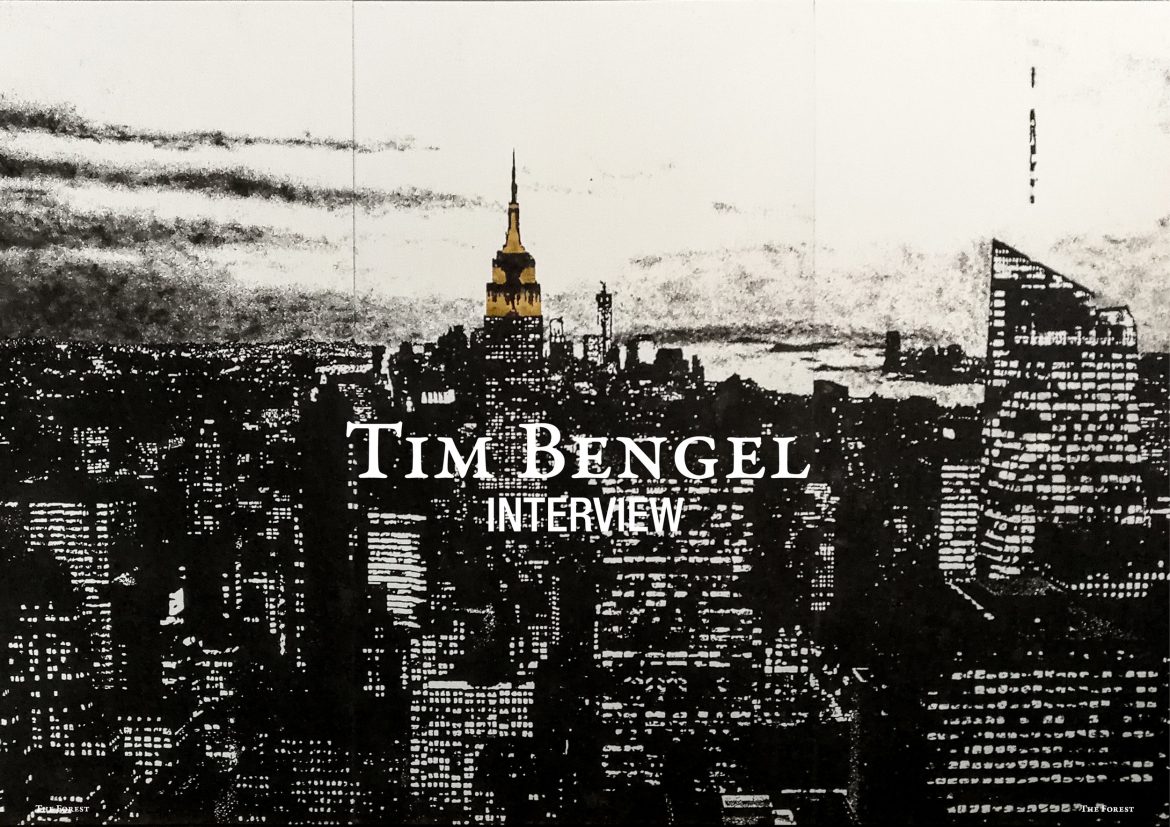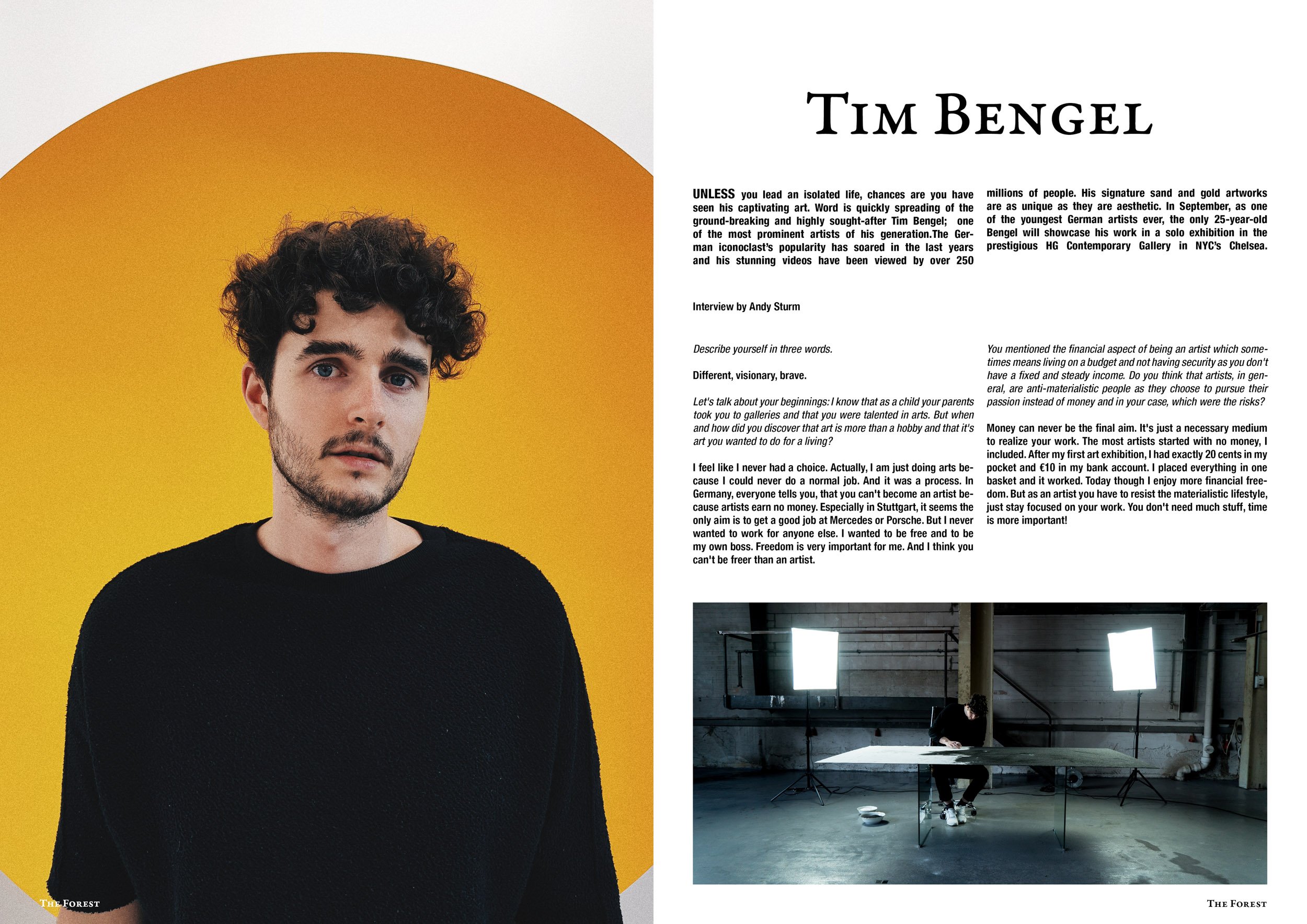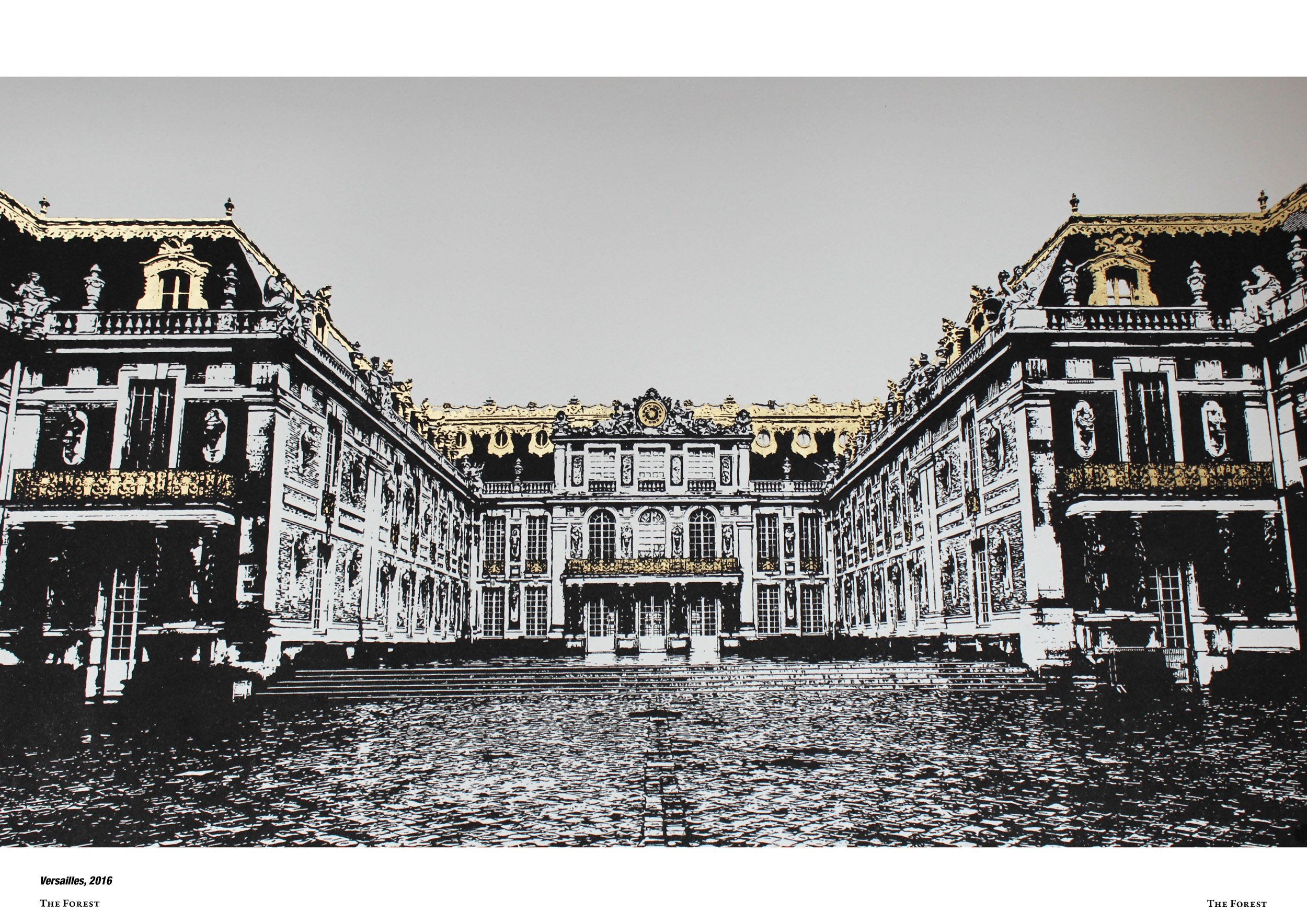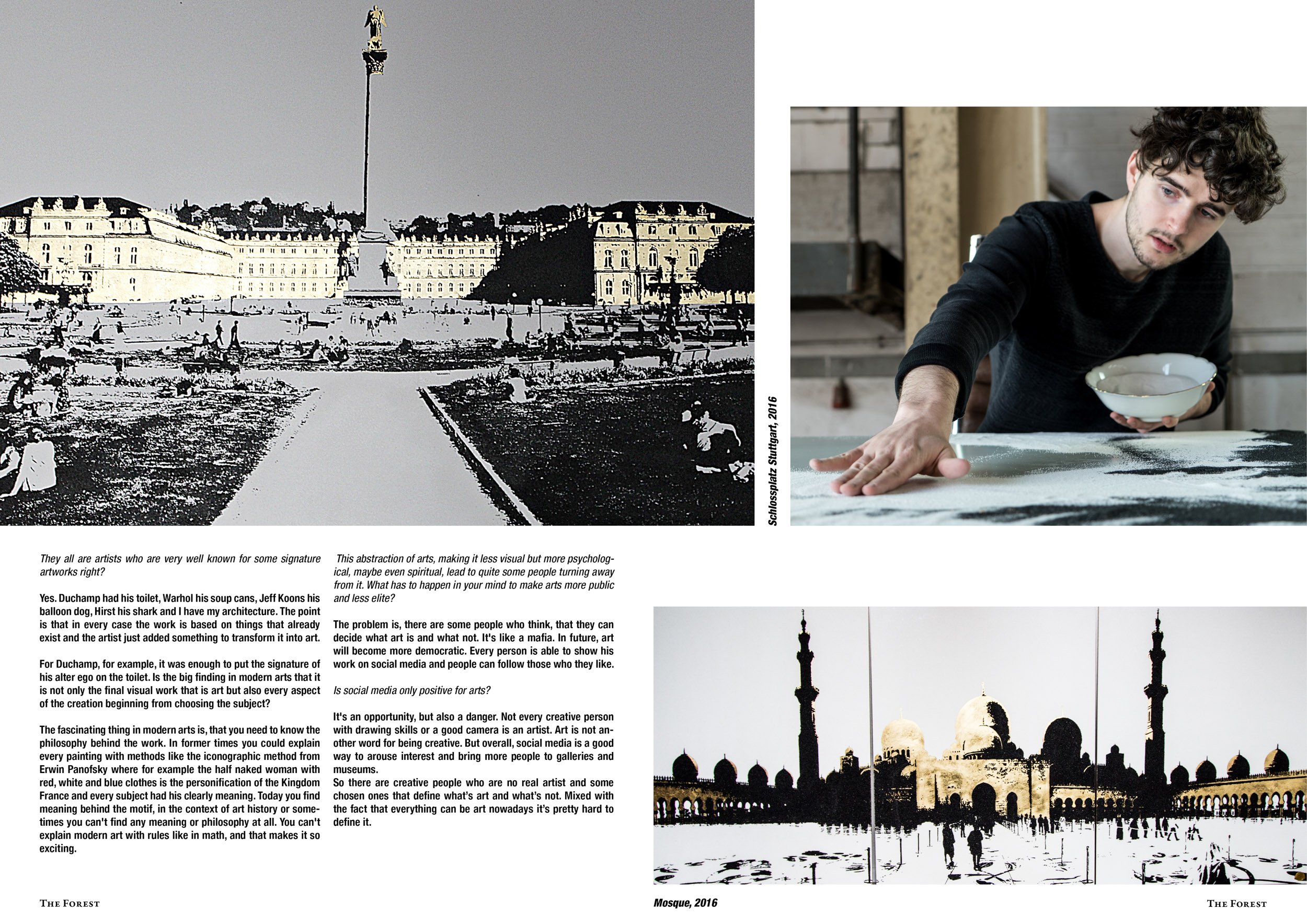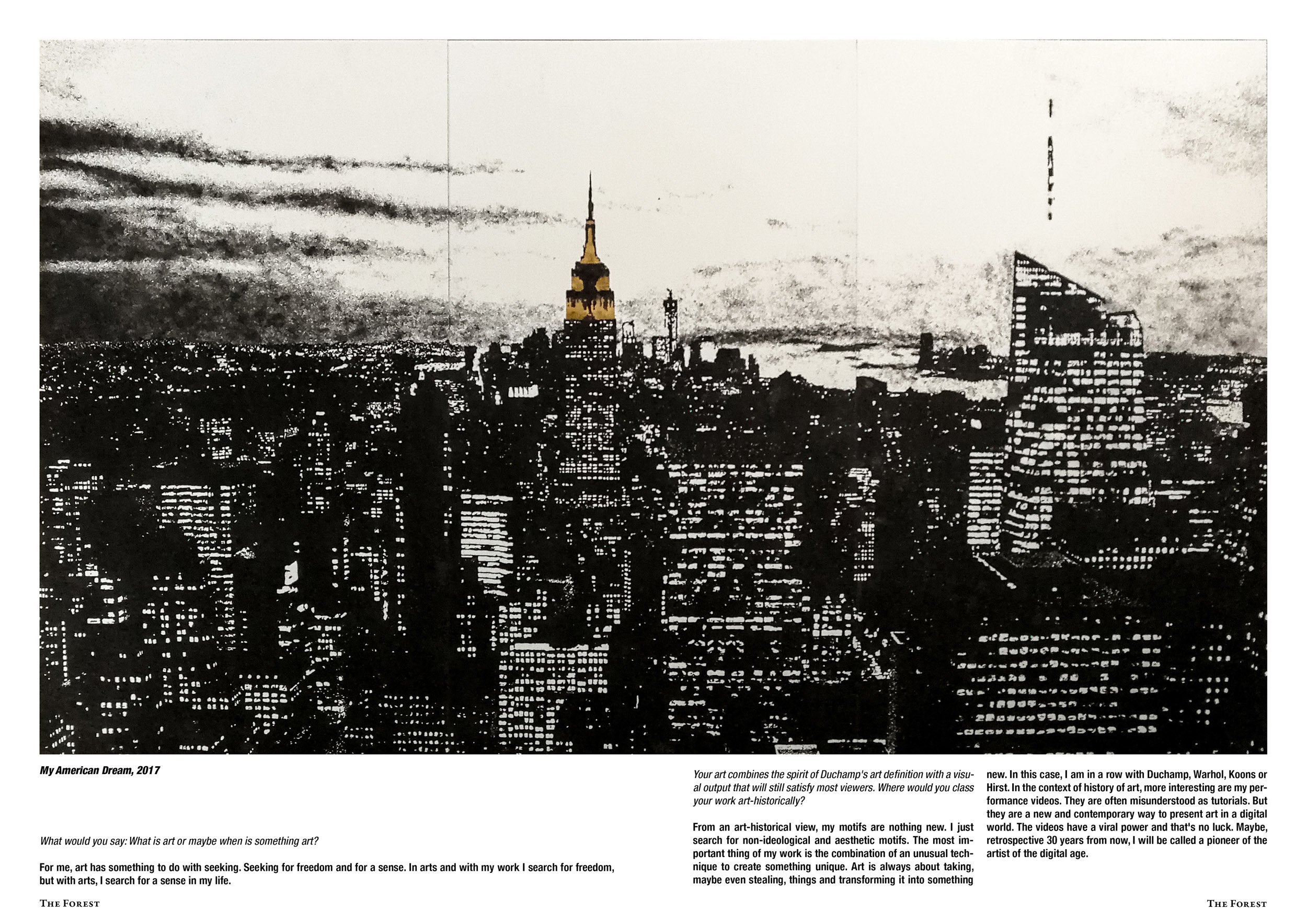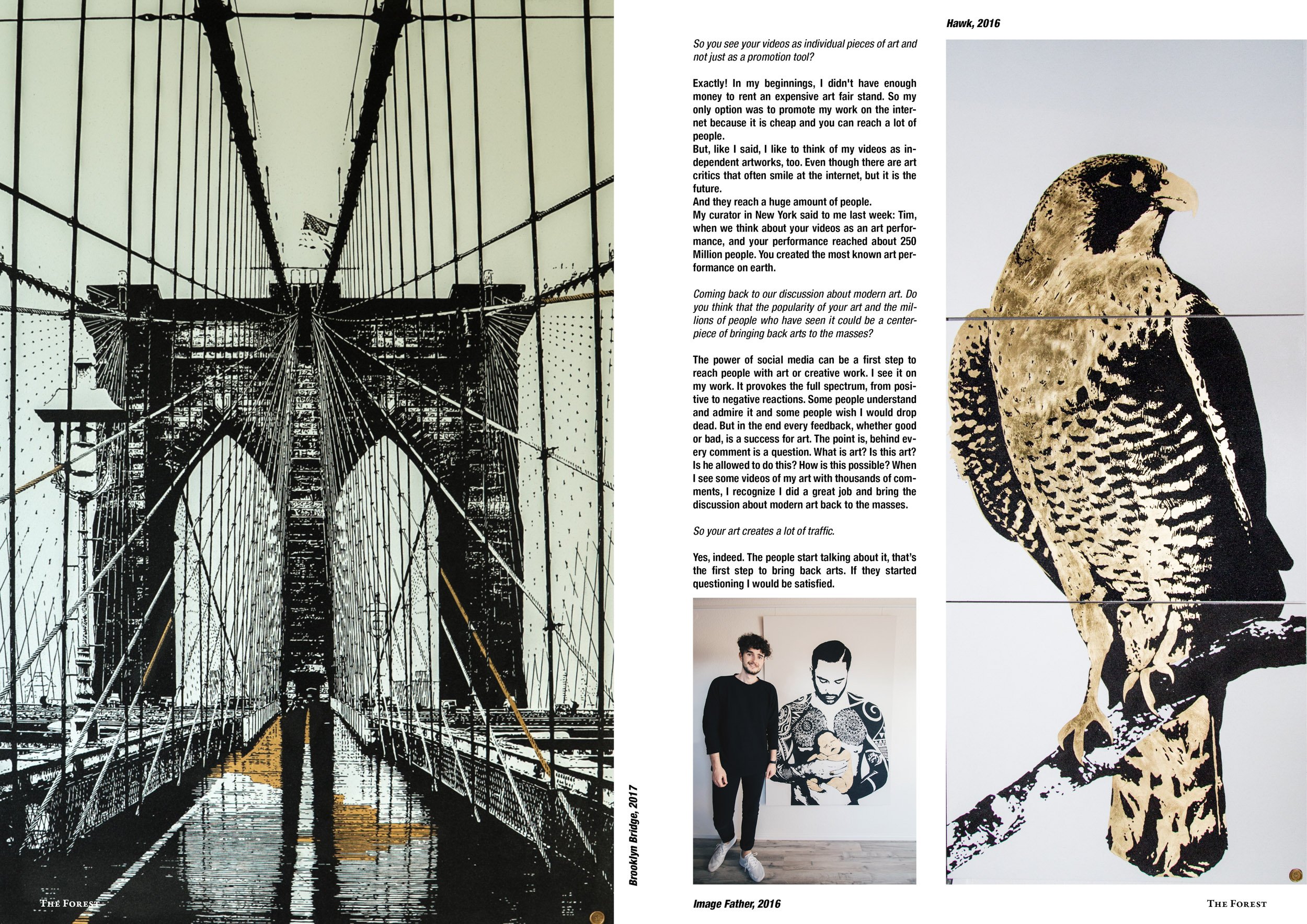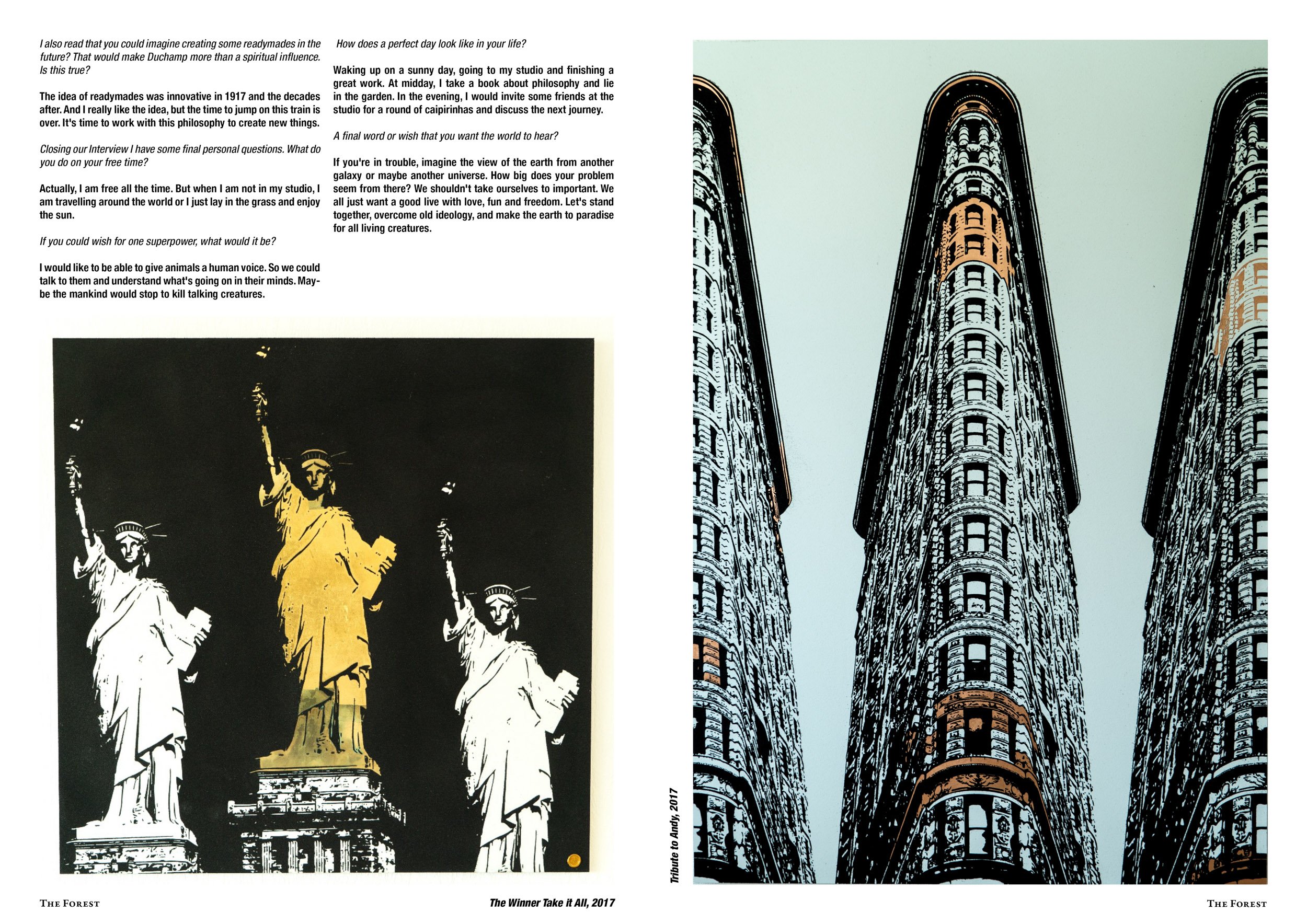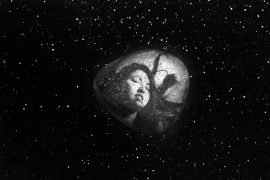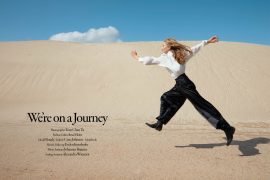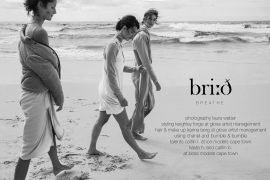Unless you lead an isolated life, chances are you have seen his captivating art. Word is quickly spreading of the ground-breaking and highly sought-after Tim Bengel; one of the most prominent artists of his generation.The German iconoclast’s popularity has soared in the last years and his stunning videos have been viewed by over 250 millions of people. His signature sand and gold artworks are as unique as they are aesthetic. In September, as one of the youngest German artists ever, the only 25-year-old Bengel will showcase his work in a solo exhibition in the prestigious HG Contemporary Gallery in NYC’s Chelsea.
Interview by Andy Sturm
[text only version follows]
You can view more of Tim’s work on his [website] and make sure to follow him on [facebook] & [instagram]
Describe yourself in three words.
Different, visionary, brave.
Let’s talk about your beginnings: I know that as a child your parents took you to galleries and that you were talented in arts. But when and how did you discover that art is more than a hobby and that it’s art you wanted to do for a living?
I feel like I never had a choice. Actually, I am just doing arts because I could never do a normal job. And it was a process. In Germany, everyone tells you, that you can’t become an artist because artists earn no money. Especially in Stuttgart, it seems the only aim is to get a good job at Mercedes or Porsche. But I never wanted to work for anyone else. I wanted to be free and to be my own boss. Freedom is very important for me. And I think you can’t be freer than an artist.
You mentioned the financial aspect of being an artist which sometimes means living on a budget and not having security as you don’t have a fixed and steady income. Do you think that artists, in general, are anti-materialistic people as they choose to pursue their passion instead of money and in your case, which were the risks?
Money can never be the final aim. It’s just a necessary medium to realize your work. The most artists started with no money, I included. After my first art exhibition, I had exactly 20 cents in my pocket and 10 € in my bank account. I placed everything in one basket and it worked. Today though I enjoy more financial freedom. But as an artist you have to resist the materialistic lifestyle, just stay focused on your work. You don’t need much stuff, time is more important!
You never studied arts but instead tried management, fashion design, art history and philosophy? It seems you never believed in a career as an artist or is there a different reason for the path you followed in education?
The only important thing is, do something and not nothing. You can find inspiration in every field. For me, it was important to look over the horizon and try different routes. Art is not an education related subject. Of course, you can learn art history and theory, but for real art, you have to create new things. You can’t learn art at school because teachers can just teach you things they know.
If we look at people who didn’t study their profession and became some of the greatest in their field, we will find names like Steve Jobs, Karl Lagerfeld or Peter Lindbergh just to name a few; not to mention almost every popular artist and musician. Would you say that there is a correlation between creative innovation and not having studied?
If you are really passionate in a creative field, studying is too slow for your zest for action. I can’t sit there and listen to teachers, who got their education just from theory. Steve Jobs, Jonathan Meese, Mark Zuckerberg, Bill Gates…all got their brilliant ideas before ending their studies. So why wait? Jump into the cold water and realize your dreams.
How do you see creativity? Can it be learned, is it a gift, is it in everybody but one has to discover it?
I think everyone can be creative. But not every creative person can become an artist. If you are an artist, you feel it. You actually have no choice to do something different.
Your sand and gold artworks are very unique. With which kind of art did you get started though?
I started as a child with imitating the artworks I had seen at the museum. I tried to imitate Kandinsky and CY Twombly because it seemed to be so simple. Later I realized, that art does not emerge from imitation but from combining and creating something new. Having remained true to my passion for art, I won my first art competition at the school I attended at the age of 18. My big format collage made from coins won against all pencil drawings and watercolor paintings. I realized that I can be successful when I do things differently.
Then you developed your sand and gold style. How did this style develop? Was it a conscious decision and strive to find a unique style or did it come by chance?
It was a process, not a conscious decision. With 18 I started working with glue. All my work is based on my experience with glue. In the beginning, the sand and gold were just an experiment in my summer holidays.
Is it true that your first artwork was destroyed since you didn’t have enough experience on sealing it? How much science is there behind what you do?
Unfortunately, it’s true. I tried to find a way to make my works more durable. The varnish I tried worked well on the tests, but on the real artworks, it was a disaster. The majority of my early works is destroyed. Today, hundreds of experiment later, I figured out the perfect combination of the right canvas, glue and several varnishes. It was a long way, but now my works are perfectly prepared and ready to ship around the world.
You mainly focused on architecture lately but there are so many great buildings on this planet. How did you choose your motifs?
Most of them are spontaneous. I see it, on the internet or in person, and I do it. On the one hand, I like monumental buildings like Versailles or the German Reichstag, because they are so strong and expressive. On the other hand, I also like structures, shadows and combinations of all these things. In my beginnings, I did works with much detail, so I was sure they would offer interesting results. But it’s more challenging to make interesting work with just a few lines. I will display my first abstract architecture works in New York later this year.
Andy Warhol always said that everything he does already exists. That’s also true for your work and some of your artworks, especially the portraits you do, show some similarities to Pop-Art. Has your work been influenced by this style?
I love the Pop-Art style. It’s so simple and banal, but on the other side so strong and expressive. But more than the style I like the philosophy behind it. Transforming random stuff into something new, that’s art for me.
Which would you say are the main artist that have influenced you?
My idols in this field are Marcel Duchamp, Andy Warhol and Jeff Koons. One of my biggest influences is „La Fontaine“ by Marcel Duchamp from 1917. It proved, that an artist can transform anything into an artwork. He was also a man who wanted to do things differently, and the spiritual father of Andy Warhol, Jeff Koons and Damien Hirst.
They all are artists who are very well known for some signature artworks right?
Yes. Duchamp had his toilet, Warhol his soup cans, Jeff Koons his balloon dog, Hirst his shark and I have my architecture. The point is that in every case the work is based on things that already exist and the artist just added something to transform it into art.
For Duchamp, for example, it was enough to put the signature of his alter ego on the toilet. Is the big finding in modern arts that it is not only the final visual work that is art but also every aspect of the creation beginning from choosing the subject?
The fascinating thing in modern arts is, that you need to know the philosophy behind the work. In former times you could explain every painting with methods like the iconographic method from Erwin Panofsky where for example the half naked woman with red, white and blue clothes is the personification of the Kingdom France and every subject had his clearly meaning. Today you find meaning behind the motif, in the context of art history or sometimes you can’t find any meaning or philosophy at all. You can’t explain modern art with rules like in math, and that makes it so exciting.
This abstraction of arts, making it less visual but more psychological, maybe even spiritual, lead to quite some people turning away from it. What has to happen in your mind to make arts more public and less elite?
The problem is, there are some people who think, that they can decide what art is and what not. It’s like a mafia. In future, art will become more democratic. Every person is able to show his work on social media and people can follow those who they like.
Is social media only positive for arts?
It’s an opportunity, but also a danger. Not every creative person with drawing skills or a good camera is an artist. Art is not another word for being creative. But overall, social media is a good way to arouse interest and bring more people to galleries and museums.
So there are creative people who are no real artist and some chosen ones that define what’s art and what’s not. Mixed with the fact that everything can be art nowadays it’s pretty hard to define it.
What would you say: What is art or maybe when is something art?
For me, art has something to do with seeking. Seeking for freedom and for a sense. In arts and with my work I search for freedom, but with arts, I search for a sense in my life.
Your art combines the spirit of Duchamp’s art definition with a visual output that will still satisfy most viewers. Where would you class your work art-historically?
From an art-historical view, my motifs are nothing new. I just search for non-ideological and aesthetic motifs. The most important thing of my work is the combination of an unusual technique to create something unique. Art is always about taking, maybe even stealing, things and transforming it into something new. In this case, I am in a row with Duchamp, Warhol, Koons or Hirst.
In the context of history of art, more interesting are my performance videos. They are often misunderstood as tutorials. But they are a new and contemporary way to present art in a digital world. The videos have a viral power and that’s no luck. Maybe, retrospective 30 years from now, I will be called a pioneer of the artist of the digital age.
So you see your videos as individual pieces of art and not just as a promotion tool?
Exactly! In my beginnings, I didn’t have enough money to rent an expensive art fair stand. So my only option was to promote my work on the internet because it is cheap and you can reach a lot of people.
But, like I said, I like to think of my videos as independent artworks, too. Even though there are art critics that often smile at the internet, but it is the future.
And they reach a huge amount of people.
My curator in New York said to me last week: Tim, when we think about your videos as an art performance, and your performance reached about 250 Million people. You created the most known art performance on earth.
You sign your artworks with a wax seal. Your logo is a trident with wings, a sign for an angel as well as for a devil? Is there a deeper meaning to that?
I created my logo at 18 during a boring math lesson. I tried to find a symbol to express my family name. My name Bengel means something like a bad devilish boy with a good heart. Bart Simpson is a Bengel for example. Now my wax seal has become a trademark because it’s another unique thing on my artworks.
Coming back to our discussion about modern art. Do you think that the popularity of your art and the millions of people who have seen it could be a centerpiece of bringing back arts to the masses?
The power of social media can be a first step to reach people with art or creative work. I see it on my work. It provokes the full spectrum, from positive to negative reactions. Some people understand and admire it and some people wish I would drop dead. But in the end every feedback, whether good or bad, is a success for art. The point is, behind every comment is a question. What is art? Is this art? Is he allowed to do this? How is this possible? When I see some videos of my art with thousands of comments, I recognize I did a great job and bring the discussion about modern art back to the masses.
So your art creates a lot of traffic.
Yes, indeed. The people start talking about it, that’s the first step to bring back arts. If they started questioning I would be satisfied.
Through the videos, your popularity grew enormously. And the first peak will be reached in September when your single exhibition opens in New York City. Can you tell us about your most important steps of success as an artist?
For a European newcomer artist, a solo exhibition in New York City is the biggest aim. My exhibition will take place at the HG Contemporary in Chelsea. Probably I am the youngest German artist who got this big chance. Chelsea is the centre of the art world. Larry Gagosian, David Zwirn, Gladstone and Hoerle-Guggenheim Contemporary within a radius of a few steps.
It is surely a very unreal feeling to be exhibited in New York at such a young age, isn’t it?
I don’t believe it until I step in the Gallery at the opening. I’m looking forward to this big event and I hope I can enjoy every second in New York. Especially in Germany, people don’t take you seriously, when you don’t have success abroad. So I think after my NYC success, many doors will open in Germany and all around the world.
Tell us something more about the upcoming exhibition.
At the exhibition, I will display my series “MONUMENTS”. About 20 works, inspired by impressive American and European architecture. Every work is different and a completely new experiment. Other combinations from different perspectives. It will be very exciting!
The opening is set for September 7th, 2017 and will include the reveal of one stunning piece of art. The show will run until 3rd of October.
So you will reveal one completely new artwork live at the exhibition? That sounds amazing.
All 20 works are new and were never displayed before. But one special piece I will reveal at this evening like in the videos. I don’t want to tell too much, but I will reveal the acme of a monument.
I know you are highly interested in philosophy. So let’s get a little more philosophical. What is art allowed to do?
I think that art is free and I try to show that. Free from rules of which materials to use or where to take motifs from. Free from the constraint of an art degree or the necessity of ideological motifs. My point is to create something new through combination and development while always questioning the “normal”.
That’s almost philosophical.
Yes, but like philosophy, art is about questions. I want the viewer to question my work:
Is this art or just great handcraft? Can he be an artist without an art degree? Is it theft to use photography from the internet as a template? How free is an artist actually? Can beautiful things still be art?
You mentioned that art is absolutely free but also the question about the freedom of an artist itself. What do you think? How free are artists?
You might think, art is on a very free level because today everything can be art. But an artist is dependent on art education, money, rich collectors, galleries and art critics.
Maybe my whole life is a performance to prove that art is more than that. I refuse to study art because there is nothing to learn, unlike sciences or history. I also started with no money and not a single contact to a collector, gallery or even another artist. An artist is always a rebel who questions existing systems. But I don’t only question the art system. I also question the need of religion and politics and the human treatment of animals. Everything with the status “normal”, every ideology, should be questioned.
You seem indeed like a rebel who is absolutely free so far. How can one maintain his freedom with rising stardom and demands?
Freedom is just a state of mind. You can be poor and free in your mind, or rich and live under constant pressure. But an important thing for freedom is anonymity. In hindsight, I maybe should have worn a mask or act as a phantom-like Banksy. But I feel free because I can shape my future like I want.
Another point you mentioned is beauty. That’s what a lot of people experience when they look at nowadays exhibitions; that beauty whether landscape, human or whatever is no topic anymore. What’s your opinion on that?
My opinion is that art doesn’t have to be beautiful. Many works are interesting because they are ugly, grotesque or just shocking. But we have reached a crazy level. For example, the Chinese artist Zhu Yu cooked and ate an unborn human baby just to shock with this “performance”. In these days for many art critics, it’s more shocking to see a beautiful work than a shocking one. And that’s my part, I try to shock with banality and beauty in times where everyone expects something else.
What’s next for you Tim? Do you already have ideas for new projects?
Sure, my head is full of ideas. I write them all down to start working after New York. The base of my future work is the fight against ideology.
That sounds very interesting. But it’s a very delicate topic, isn’t it? There are a lot of people who could feel offended when their ideology is criticized, right?
And exactly that’s what makes ideology so dangerous! Because you can’t talk with people objective about their ideology. There is always just one right answer for them. They believe that their god, their political party, their football club or their “tradition” is always right. But like Jonathan Meese says, we have to overcome all ideology for a world of art and love.
I also read that you could imagine creating some readymades in the future? That would make Duchamp more than a spiritual influence. Is this true?
The idea of readymades was innovative in 1917 and the decades after. And I really like the idea, but the time to jump on this train is over. It’s time to work with this philosophy to create new things.
Closing our Interview I have some final personal questions. What do you do on your free time?
Actually, I am free all the time. But when I am not in my studio, I am travelling around the world or I just lay in the grass and enjoy the sun.
If you could wish for one superpower, what would it be?
I would like to be able to give animals a human voice. So we could talk to them and understand what’s going on in their minds. Maybe the mankind would stop to kill talking creatures.
How does a perfect day look like in your life?
Waking up on a sunny day, going to my studio and finishing a great work. At midday, I take a book about philosophy and lie in the garden. In the evening, I would invite some friends at the studio for a round of caipirinhas and discuss the next journey.
A final word or wish that you want the world to hear?
If you’re in trouble, imagine the view of the earth from another galaxy or maybe another universe. How big does your problem seem from there? We shouldn’t take ourselves to important. We all just want a good live with love, fun and freedom. Let’s stand together, overcome old ideology, and make the earth to paradise for all living creatures.
–
You can view more of Tim’s work on his [website] and make sure to follow him on [facebook] & [instagram], to keep up to date.

